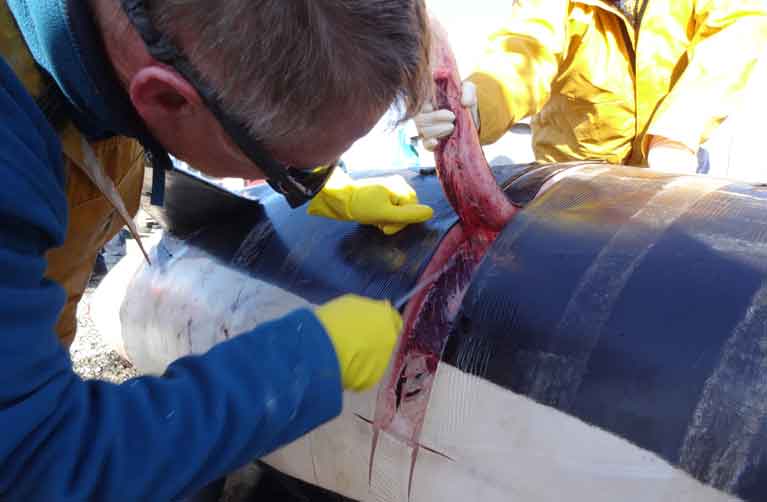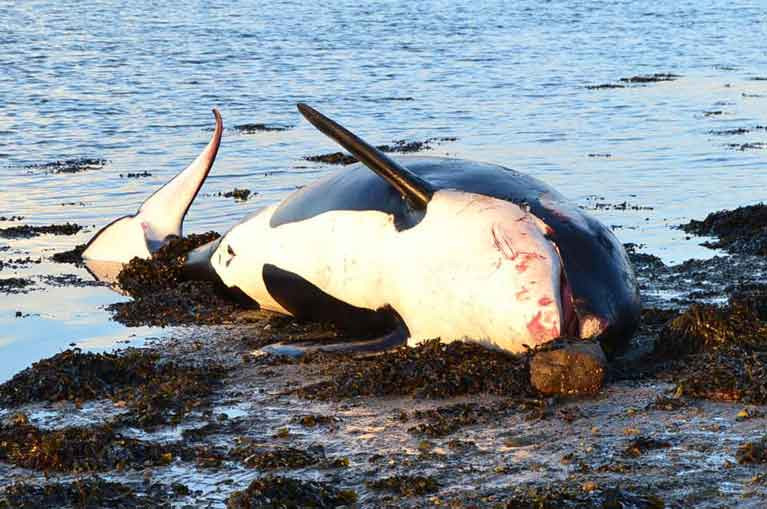Flame retardants, pesticides and other pollutants are among the toxic ingredients found in four killer whales stranded on the Irish coastline, according to a new study writes Lorna Siggins
Blubber samples analysed by scientists from Galway-Mayo Institute of Technology (GMIT) and the Marine Institute showed that the marine mammals concentrate persistent pollutants to “very high levels”.
The samples were taken from three killer whales stranded in Galway, Mayo and Waterford between 2010 and 2017 - one of which was pregnant with a near term foetus that was also sampled.
The study showed bio-accumulation of 16 polychlorinated biphenyls (PCBs), seven brominated flame retardants and 19 organochlorine pesticides, according to results published in the Marine Pollution Bulletin.
 Collecting blubber sample from killer whale for contaminant analysis
Collecting blubber sample from killer whale for contaminant analysis
Concentrations of PCBs in one killer whale, stranded at Doohoma, Co Mayo, exceeded the suggested toxicity threshold of 17mg/kg, the authors state.
GMIT PhD student and senior author Moira Schlingermann noted that “although these concentrations are high, these results are relatively low from a global perspective, particularly in comparison to the highly contaminated transient killer whales from coasts along the north-east Pacific Ocean”.
“These contaminants are known as legacy pollutants as they were produced decades ago but still persist in our marine waters,” she said.
“ We are also interested in “emerging” pollutants, new chemicals that have only recently been designed and released into our environment and for which we do not know their effects,”she said.
“Persistent pollutants continue to be of major concern for marine apex predators such as killer whales and it is vital that they are continually monitored and reported in order to add to the knowledge of pollutants across the entire range of this species,” she said.
Dr Philip White of GMIT supervised much of the work with Dr Brendan McHugh from the Marine Institute and it was conducted at the institute laboratories in Oranmore, Co Galway.
“We have to do everything we can to prevent these substances from entering the marine environment"
Dr Simon Berrow, co-supervisor at GMIT and Irish Whale and Dolphin Group chief executive had warned of the “dire future” facing killer whales last year.
“The build-up of persistent pollutants and their effects on these animals reproduction are undoubtedly the biggest long term threat they and species of dolphin and porpoise face in our oceans,” Dr Berrow said.
“We have to do everything we can to prevent these substances from entering the marine environment and the food chain, because once in it, they will be almost impossible to remove,” he said.
This work was conducted under a GMIT RISE studentship, which was part-funded by the IWDG.
For access to the publication in the Marine Pollution Bulletin visit:































































